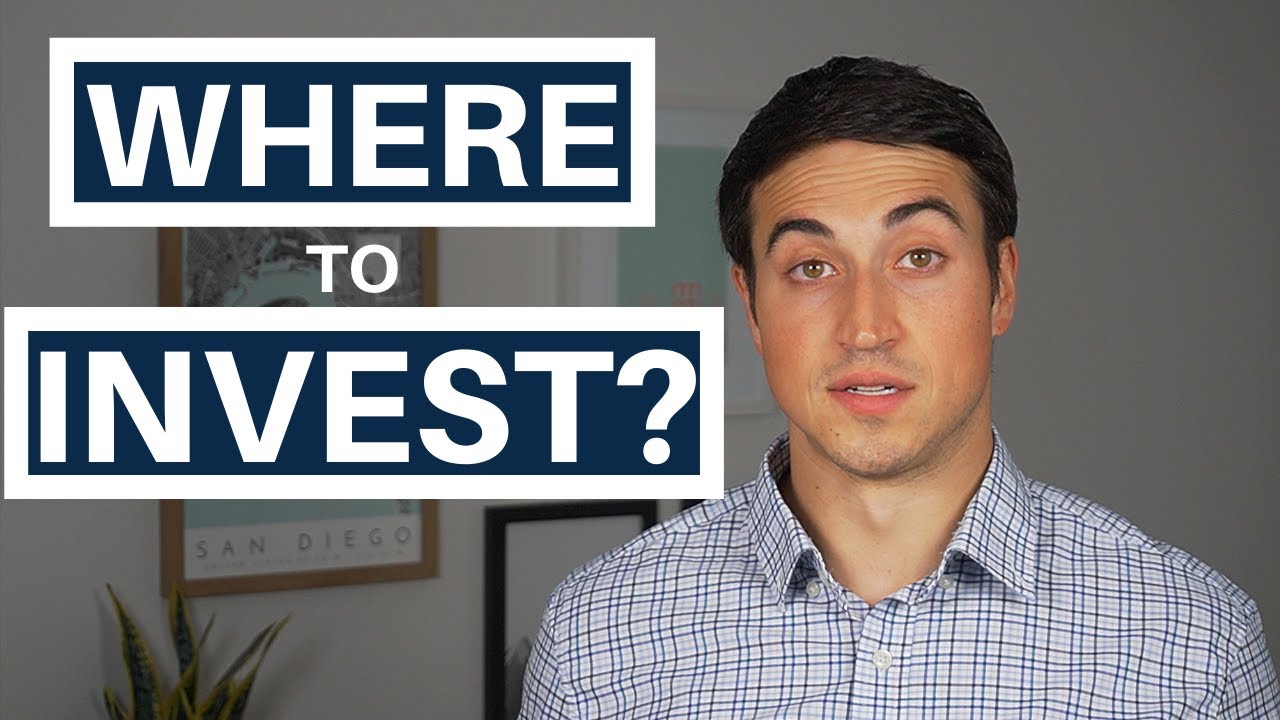- The Academy


How To Build A Real Estate Investment Thesis

“If you had $100 million to invest in real estate, where would you invest it?”
If you’re sitting across the table from a hiring manager in an interview for a real estate firm, this is one of the most intimidating open-ended questions that you can be asked.
There are so many things to think about, and with so many product types and markets to consider, how do you answer this question?
Fortunately, you don’t have to know everything about every market in order to respond in a way that makes you look good on interview day, or helps you make better investment decisions if you’re doing deals on your own.
And in this article, we’ll break down three of the biggest things to consider when building a real estate investment thesis, and how to build a framework for where you want to invest, and what you want to invest in. You can also watch the video version right here :
So let’s get back to the original question:
If you had $100 million to invest in real estate, where would you invest it?
Your answer to this question can depend on a lot of different factors, but in order to develop a well thought-out investment thesis, you really only need to break this down into three main parts.
Decide On Your Target Geographic Market(s)
The first thing that you need to decide on when building an investment thesis is the market (or markets) that you’ll be targeting.
Real estate values are very closely correlated with their location, and how attractive a location is from a real estate investment perspective essentially boils down to two things:
- Where demand is currently outpacing supply, and
- Where demand is projected to outpace supply in the future.
Demand drivers in a real estate market can be summed up as the things that make residents and businesses want to move to a given area .
The biggest ones here usually include things like job growth, tax friendliness, lower cost of living, and better weather, all of which lead to the biggest indicator of demand in a market, net migration patterns .
Net Migration Patterns and Real Estate Investing
Net migration numbers measure the amount of people moving into an area vs. the amount of people moving out of an area, essentially showing the growth or contraction of a market.
Markets with positive net migration numbers indicate more people are moving to the area, while negative net migration numbers indicate more people are moving from the area.
And this directly impacts the demand of essentially all product types in a market.
Analyze Current (and Future) Real Estate Supply
Even if demand goes up in a market, we still need supply growth to be less than the demand in a market in order for rents and property values to ultimately increase.
So with that, the second part of choosing a market is the process of analyzing the current and future supply in a market itself.
This is primarily determined by the current development pipeline, and current governmental restrictions on new development and renovation of existing structures (AKA “Red Tape”).

To find this information, the research groups at major CRE brokerage firms will generally publish Quarterly or Annual Market Reports, which will usually provide some sort of an overview of projects either planned or under construction in a market.
And if you’re looking for more in-depth information, comprehensive paid databases like CoStar will have detailed data in most markets on what supply is going to look like over the next 1 to 3 years in a number of commercial square feet, or total number of multifamily units.
“Supply-Constrained” Real Estate Markets
As far as what might be planned in the future outside of the information you can gather, information on building restrictions in a market, and also availability of land, will help you make projections about what supply is going to look like in the next decade or two and whether a market is “supply-constrained” or not.
Coastal cities like San Francisco, Los Angeles, and New York have traditionally been very highly regulated markets, creating supply constraints and upward pressure on rents and values as a result.
At the same time, non-coastal markets like Dallas, Phoenix, and Las Vegas have historically been less regulated and have a much higher probability of being overbuilt at the end of a real estate cycle, leading to supply outpacing demand and prices weakening as a result.

The bottom line is that a strong investment thesis generally involves investments in markets where demand is increasing and supply is growing either more slowly or staying static, and things like positive net migration and supply constraints in the market will make that a much more likely scenario.
Choose Your Real Estate Product Type
Once you’ve decided on your target markets, the next step in building an investment thesis is to choose the product type you want to invest in.
Choosing a product type is going to depend primarily on your research, but also your beliefs around what the future looks like for the way people live, work, shop, and play.
Right now, some investors are making big bets on remote work becoming more permanent and widespread, while others are taking a more aggressive approach and assuming office needs will come roaring back stronger than ever.
Some investors are investing heavily in necessity-based retail after seeing some really strong performance in 2020 when the rest of the sector has been down.
Other investors won’t touch the retail space because they’re predicting even greater Amazon and e-commerce disruption in necessity-based retail purchase behaviors in grocery stores and pharmacies.

Some investors are doubling down on multifamily, assuming that affordability will continue to decrease and the amount of “renters-by-necessity” will increase as a result.
Others are backing off of multifamily rentals due to millennials beginning to get married and moving to the suburbs in larger, single family homes.
At the end of the day, there is no right or wrong answer in any of these scenarios, but whatever you believe, it’s important to back this up with research and fact, and to support where you see an arbitrage opportunity in the market.
For example, if you’re planning to make a big bet on hotels coming back, you should be able to talk through how long it’s taken in the past several recessions for occupancy numbers to get back to healthy levels at hospitality properties, and which markets have recovered first.
And if you think there are repurposing opportunities in distressed assets to convert those into higher and better uses, make sure you can back up the rent and supply statistics in that product type to support that decision.
The bottom line here is that regardless of the stance you take, backing your opinions up with data is a necessary piece of the puzzle when talking through any product type or product types that you’re planning to target.

Come Up With a Research-Backed Real Estate Investing Business Plan
Finally, once you’ve decided on the markets and product types that you’re bullish on, the last step in the process is to come up with your business plan and, again, back that up with data.
If your investment thesis involves doing “value-add” apartment deals in San Diego, are people going to be paying for renovated units during a tough time in the economic cycle?
And if your plan is to renovate units and raise rents, will things like rent control restrictions be an issue in executing on that business plan?
To perform those renovations you’re planning, what are construction costs today, where are they trending, and how will they affect what you’re trying to accomplish?
Again, similar to everything else on this list, the key here is to make sure there are data points to support your decisions, and to make sure that you can point to those data points when talking through business plans that you find attractive in the real estate space today.
Where To Invest – The Bottom Line
Overall, getting clear on the markets you like, the product types you’re interested in, and the business plan you’re looking to implement are the three main steps in building a solid investment thesis for your own investments (or to explain during a CRE interview), and backing that thesis up with data is an extremely important piece of the puzzle.
And to do your research, even if you don’t have access to a comprehensive database like CoStar, free research published by firms like CBRE, JLL, Cushman and Wakefield, Green Street, and even the Bureau of Labor Statistics are all great resources to find information on each of these topics.
What To Do Next
The next time you’re asked what you’d do with $100 million, by going through these steps, you’ll know where you’d plan to put it, and why you’d plan to invest it where you would.
And once you’re dialed in on a market and you’re ready to start modeling out individual deals, if you want help with building out your own real estate pro forma models for valuing commercial properties or to prepare for an Excel interview exam if you’re applying for new jobs, make sure to check out Break Into CRE Academy for instant access to our entire library of courses on real estate financial modeling and investment analysis, access to dozens of pre-built real estate financial models and Excel exercise files, and some additional one-on-one email-based career support to get your questions answered every step of the way.
So thanks so much for reading, and I hope this was helpful in building out your own real estate investment thesis!
Real Estate Market Timing - Is It Possible (and Should You Try)?
If i had to start my commercial real estate career all over again, here's what i'd do, grab the free real estate financial modeling crash course.
Learn The Three Pillars of Real Estate Financial Modeling & How To Build Models on Autopilot

Get instant access to the crash course
Learn the three key pillars of real estate financial modeling - and how to use them to build models from scratch.
You'll also receive access to free weekly videos to help you master real estate financial modeling & advance your career
- First Name *
- Phone This field is for validation purposes and should be left unchanged.
Privacy Overview

IMAGES
VIDEO
COMMENTS
institutional Real Estate investment managers to understand how to formulate an investment thesis and capital deployment strategy. Using a Mean-Variance analysis, this study will first …
This thesis focuses on international investments in luxury real estate, providing an in-depth analysis of the market and identifying key factors that make it attractive to …
In recent years, real estate investment has flourished because of low interest rates and public income searching for yield. 2021 signalled a boom in real estate merger and acquisition (M&A) …
This thesis aims to provide an approach to real estate residential modeling and forecasting covering property types’ correlation, time series attributes within a region or a city, and socio- …
Writing a Credible Investment Thesis. Every deal your company proposes to do—big or small, strategic or tactical—should start with a clear statement how that particular deal would create value for your company. We …
• how real estate companies integrate ESG into the investment process, • how they define, measure, and implement asset-level ESG strategies, and • what are the perceived impacts of …
Our Investment Thesis. In addition to building a strong partnership team, having a clear vision of the assets we want to pursue is very important to us at Adventurous Real Estate Investors. Below, we share our current investment …
Most of the emphasis is put on real estate diversification strategies and important issues regarding real estate investments. However, the chapter begins by describing the basic …